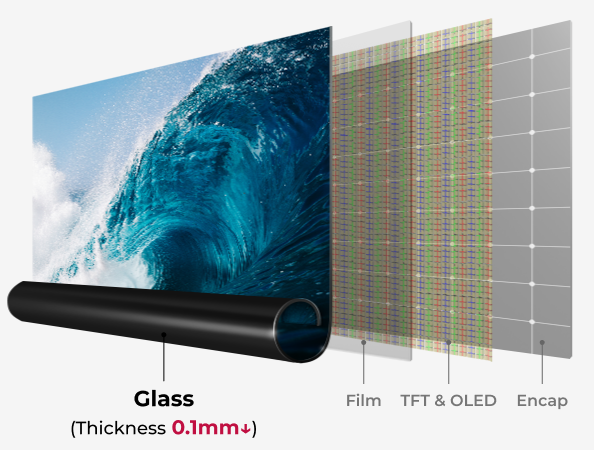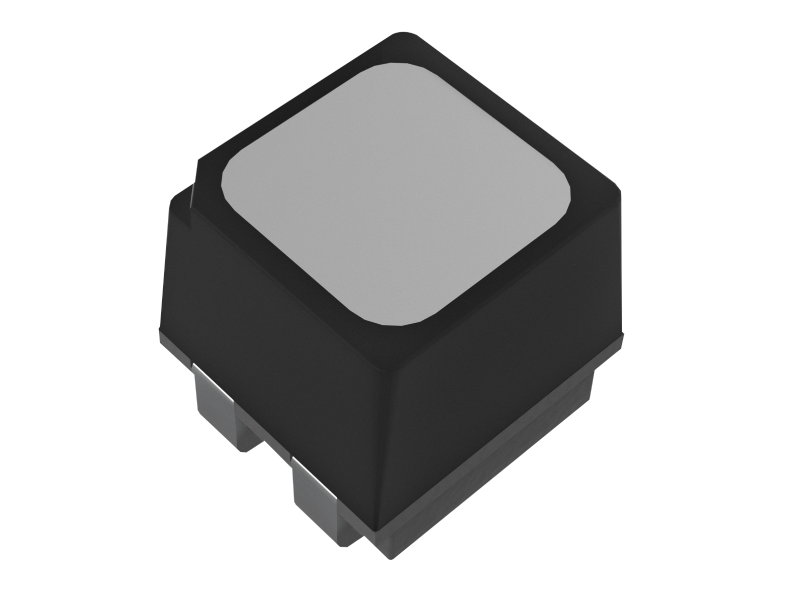A roll-up LED display, also known as a flexible LED display or a rollable LED screen, is a type of display technology that offers flexibility and portability. Unlike traditional LED displays that are rigid and fixed in shape, roll-up LED displays can be rolled or folded, allowing for easy transportation and storage. Have you ever seen or used a roll-up LED display? Do you know how it works? Guess most of us don’t use see this kind of display. So let’s dive into the world of roll-up LED displays.

Rollable OLED Display
A roll-up LED display is no doubt designed for max convenience in daily use. So features like flexibility and portability are the most important features for a roll-up LED display. Let’s see the details.
Flexibility:
Roll-up LED displays are made of flexible materials, such as thin film substrates or polymers, which allow the display to bend and curve. This flexibility enables unique and creative display designs, including curved or wraparound screens.
Lightweight and Portable:
Roll-up LED displays are lightweight and compact, making them highly portable. They can be easily rolled up or folded, making transportation and installation convenient, especially in scenarios where frequent setup and dismantling are required.
High Brightness and Image Quality:
Despite their flexibility, roll-up LED displays maintain high brightness levels and image quality. They offer vibrant colors, high contrast ratios, and wide viewing angles, ensuring excellent visibility and visual impact.
Easy Installation:
Roll-up LED displays often come with user-friendly installation mechanisms, such as magnetic attachments or adhesive backing. This simplifies the setup process and allows for quick installation on various surfaces, including walls, windows, or even curved structures.
Roll-up LED displays work through a combination of flexible LED technology, thin-film substrates, and control systems. Here’s a general overview of how roll-up LED displays function:
Flexible LED Technology:
Roll-up LED displays are built using flexible LED modules that are designed to bend and conform to different shapes. These LED modules are typically composed of tiny light-emitting diodes (LEDs) arranged in a grid pattern.
Thin-Film Substrate:
The LED modules are mounted on a thin-film substrate, which is a flexible material that allows the display to be rolled or folded without damaging the components. Common substrate materials include flexible polymer films or thin glass.
Electrical Connections:
The LED modules are interconnected through flexible circuitry, which consists of conductive traces printed on the substrate. These traces carry electrical signals to power the LEDs and control their brightness and color.
Control Systems:
Roll-up LED displays require control systems to manage the operation of the LEDs. These control systems typically consist of a driver board or controller that receives input signals and sends commands to the LEDs. The controller can adjust the brightness, color, and timing of the LEDs, enabling dynamic and customizable display content.
Power Supply:
Roll-up LED displays are powered by an external power source. The power supply provides the necessary electrical energy to drive the LEDs and control systems, ensuring proper functionality and brightness.
Display Content:
Roll-up LED displays can receive input from various sources, such as video signals or computer-generated content. The input signals are processed by the control systems and translated into commands that control the behavior and appearance of the LEDs. This allows for the display of images, videos, animations, or any other visual content.
When the roll-up LED display is unrolled or unfolded, the flexible LED modules straighten out, and the display assumes its flat shape. The control systems drive the LEDs based on the input signals, resulting in the illumination of specific LEDs to form the desired image or video content. The high brightness and color accuracy of the LEDs contribute to the display’s visual quality and impact.
Once the display is no longer needed, it can be rolled up or folded for easy storage or transportation. The flexible nature of the materials used allows the display to be bent without damaging the LED modules or the thin-film substrate.
Roll-up LED displays are widely used in various applications, such as digital signage, mobiles phones, laptops and TVs, even on wearable designs.
Digital Signage
Roll-up LED displays are easy to transport. This feature makes them a perfect choice for digital signage. They’re widely seen in hotels, restaurants, airports, retail stores, public transportation, etc.
Mobile Phones
Roll-up LED displays greatly enhance mobile phones portability. With this creative design, mobile phones attract more users who want a new experience in their daily use of smart phones.
Laptops and TVs
This mainly has to do with the production of roll-up computer monitors—an adjustable screen whose size can be changed. Similar to rollable smartphones, the size of the roll-up computer screen can be folded to and unfolded to the desired sizes during use.
Automobiles
Automobile manufacturers are also integrating roll-up LED displays into their cars. They believe roll-up LED displays could bring a fashionable looking for automobiles. It will become a trend in the future.
Wearable
Designers are now starting to apply roll-up LED display into wearable to create a unique visual impact.
The cost of roll-up LED displays can vary significantly depending on various factors such as the size, resolution, quality, features, and brand. Additionally, market conditions and availability can also impact the pricing.
That being said, roll-up LED displays typically tend to be more expensive compared to traditional fixed LED displays of similar size and resolution due to the additional engineering required to make them flexible and portable. The flexible materials, thin-film substrates, and specialized manufacturing processes contribute to the higher production costs.

Kinglight provides various LEDs for displays manufacturing
To provide a rough estimate, roll-up LED displays can range from a few hundred dollars for smaller and lower-resolution models to several thousand dollars or more for larger, higher-resolution, and feature-rich displays. The cost can increase significantly for custom-made or specialized roll-up LED displays designed for specific applications. For example, the LG’s rollable OLED TV is priced at an eye-popping $100,000.